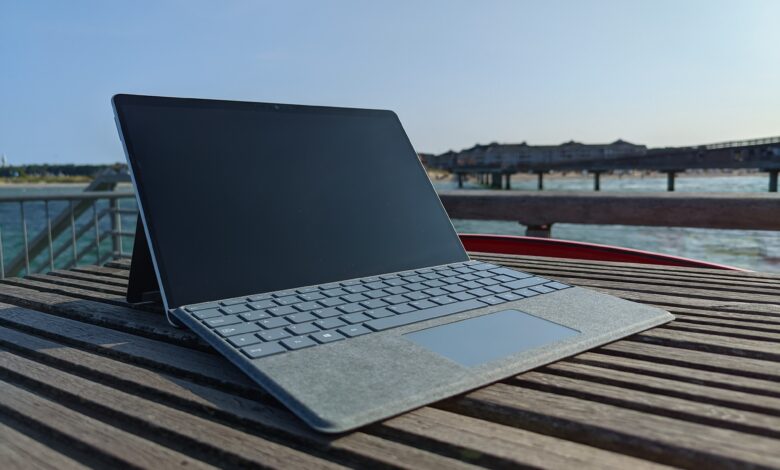
Microsoft’s Surface lineup is one of the most popular 2-in-1 devices on the market. Since the Surface devices are supposed to be portable and light, there is not much room for a large battery in the casing. Therefore, the battery life was always a point for improvement.
Now, Microsoft has had the Surface Pro X on the market for about two years, and it keeps getting smaller hardware improvements. The Surface Pro X is based on an ARM processor developed by Microsoft and Qualcomm in cooperation. The ARM architecture, on which smartphone processors are also based, is significantly more power-efficient than the x86/x64 architecture of the previous desktop CPUs. Therefore, a notebook with an ARM processor should show a much improved battery life with otherwise the same hardware.
However, the issue that arises with an ARM device running Windows is app compatibility and performance. Due to the different architecture, many Windows apps cannot run natively on ARM, but have to be emulated, which results in performance issues.
“Windows on ARM”, i.e. the Windows version for ARM devices, recently got support for x64 emulation in the Windows Insider Preview. As a result, all apps that can be run on normal Windows should now also be executable on the Surface Pro X.
This closed compatibility gap was the incentive for me to test the Surface Pro X and thus also “Windows on ARM” and to see if an ARM notebook can be a reasonable alternative to the classic x86 device, as well as to compare it with other ARM devices like the new MacBooks.
Workmanship and design
The Surface Pro X was two years ahead of the design of the rest of the Surface devices. It wasn’t until the now recently unveiled Surface Pro 8 that the design of the Surface Pro X with its thin edges was adopted.
The Surface Pro X is available in platinum and matte black. Most impressive are the Pro X’s dimensions. It is only 7.3 mm thick and weighs 774 grams. On top of that, it has very thin edges, which are actually only noticeable at the top and bottom.
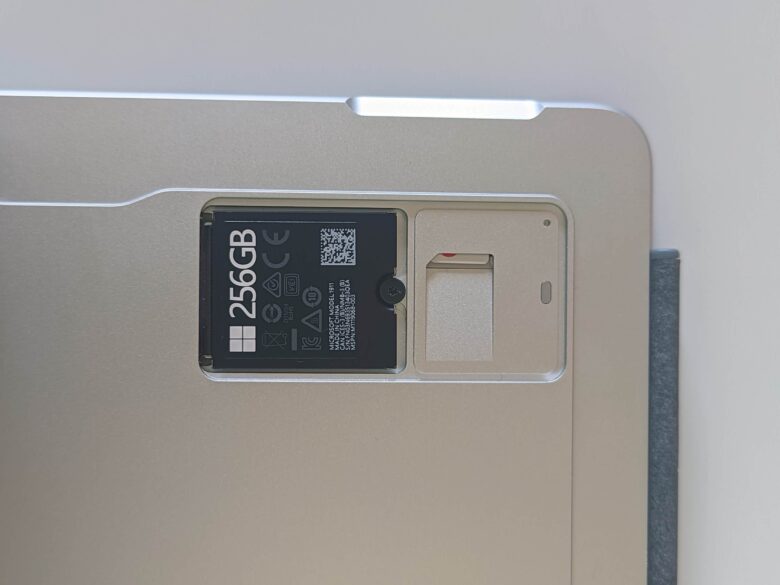
The rough surface of the back feels very pleasant, as already known from the other Surface devices. There is a flap under the stand, which in turn houses the removable SSD. This can also be used to expand the Surface Pro X’s storage in the future.
Hardware
The built-in hardware is comparable to that of a Surface Pro 7. Depending on the model, you get 8 GB or 16 GB of LPDDR4x RAM, as well as between 128 GB and 512 GB of SSD storage. Only the in-house processor internally differentiates the Surface Pro X from other Surface devices.
Since the Microsoft SQ 2 chip is an in-house development, it is difficult to compare it to other processors, such as an Intel Core i5 or i7. However, it is suspected that the SQ 2 is a modified version of the Qualcomm Snapdragon 8cx Gen.2 whose CPU is based on the Snapdragon 855. This SOC is installed in the OnePlus 7T Pro, for example.
The Microsoft SQ 2 brings along a Qualcomm LTE modem, which means that the Surface Pro X supports mobile data with SIM or eSIM. The slot for a SIM card is under the same flap where the removable SSD is found.
Besides the Surface Connect port, two USB-C ports are found on the sides of the Surface Pro X. There is no room for larger ports due to the device’s thinness, but I would have liked to see one or two more USB-C ports. A USB-C dock would still be a sensible purchase, though, since USB-A or other older ports are still needed for many things.
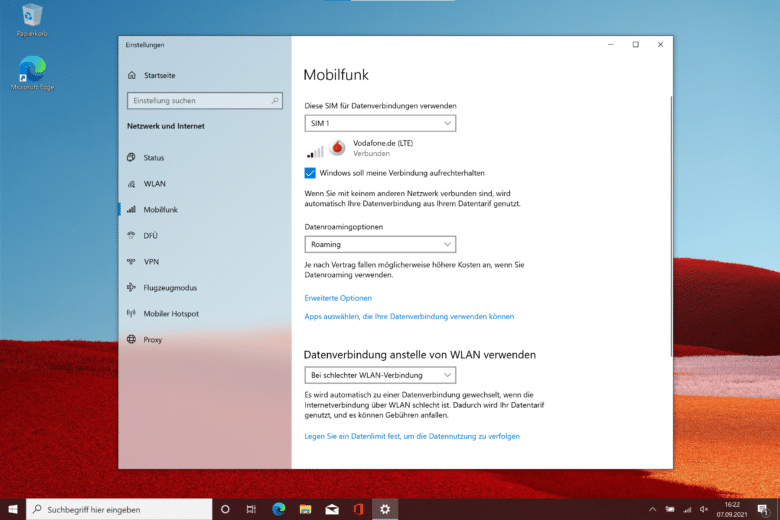
A dedicated keyboard and stylus is available for the Surface Pro X. The keyboard of the Surface Pro 7, for example, cannot be connected. The new keyboard includes a notch in the top center that can house and charge the stylus. This makes it easier to transport than the other older Surface devices.
In order for the pen to fit inside the keyboard, it is flattened and no longer round like the pen for the Surface Pro 7. I like this quite a bit, but I also know advocates of the round Surface Pen. Working with the pen on the Surface Pro X also works well as usual.
Specifications
| Processor | Microsoft SQ 1, Microsoft SQ 2 |
| Memory | 128 GB, 256 GB, 512 GB SSD |
| Memory | 8 GB, 16 GB LPDDR4x |
| Graphics unit | Adreno 685, Adreno 690 |
| Connectors | 2x USB-C, 1x Surface Connect, 1x Nano Sim |
| Camera | 5 MP Front, 10 MP Back |
| Audio | 2-watt stereo speakers |
| Connectivity | WLAN 5, Bluetooth 5.0, LTE, GPS |
| Case | Anodized aluminum, 774 grams |
| Colors | Matte black, platinum |
| Display | 13 inch, 2880 x 1920 pixels, 3:2 ratio |
| Sensors | Accelerometer, gyroscope, magnetometer, ambient light |
| Scope of delivery | Power supply, SIM tool, manual |
| Price | € 486.13 * |
Software
The Surface Pro X ships with “Windows 10 on ARM.” However, an update to “Windows 11 on ARM” is already available. By default, only the x86 emulation is available on “Windows on ARM”. This means that only apps developed for ARM and x86 apps can be run on the Surface Pro X out of the box. Support for 64-bit (non-ARM) apps is still missing in the normal “Windows on ARM” release.
Since I wanted to test the x64 emulation I joined the Windows Insider program. The Windows Insider program is free and allows you to test Windows builds that are still in development. In the latest builds of the Insider Program for “Windows on ARM” the x64 emulation is already included, which allows me to test the feature in advance.
The x64 emulation made “Windows on ARM” feel no different to me than Windows on my desktop PC, for example. Software that I normally use on my other devices also worked the same on the Surface Pro X. If you don’t think about it directly, you forget after a short time that this is not a “normal” PC.

Even old software from a few decades ago can run on the Surface Pro X. Rollercoaster Tycoon II, which Chris Sawyer wrote by hand in x86 assembly in the early 2000s, runs flawlessly on the Surface Pro X. The Surface Pro X is rather unsuitable for playing current and hardware demanding titles. Gaming is difficult on ultrabook hardware anyway, but the overhead added by emulation makes it even more difficult.
Benchmark
With a single-core score of 798 and a multi-core score of 3172, the SQ 2 in the Surface Pro X cannot keep up with other processors in the same price segment. It is rather on the level of an Intel Core i5-8305G, which was installed in notebooks in 2018.
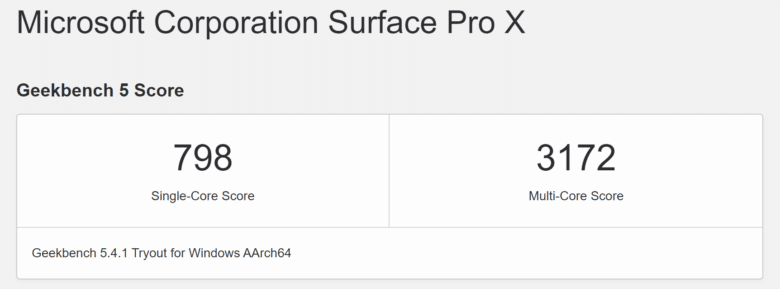
For example, a Surface Pro 7 with an i5-1035G4 brings a single-core score of 1131 and a multi-core score of 4351. That’s about 40% more performance on average for a device that was launched at the same time and is in the same price segment, if not a bit cheaper.
The result becomes even more depressing when you look at the score of the M1 MacBook Air. Like the Surface Pro X, the M1 MacBook Air has a processor with ARM architecture. However, its single-core score is 1753 and its multi-core score is 7443, which is more than double the performance and the MacBook Air is available from around €1000.
However, I have to say that I didn’t notice the worse performance in everyday use. When browsing the web, streaming video, editing PDFs or writing in Word, the performance makes no difference. I basically use notebooks on the go for studying or working, so strong performance is not too important for my everyday work. However, it is important to me that a notebook can still handle these tasks well in a few years.
Surface Pro X vs. Apple M1
The question now, of course, is how it is that Microsoft can launch a device at the same time and for a higher price than a competitor, but only offer half the performance? The answer is simple. Microsoft can’t keep up with Apple’s M1 processors at the moment. At this point, however, no company that isn’t Apple itself can.
Apple has the unique position of being a long-time chip designer, OEM, and software designer all at the same time. Apple can optimize their devices in every aspect and match the components because they provide the software and the hardware.
If you look at the Surface lineup, you would think it would be the case there as well. After all, Microsoft produces the devices and also the Windows operating system. However, one big point is different – and that is that Apple themselves are the only ones using their software and hardware. It’s different for Microsoft, mainly because their business is structured differently.
Microsoft’s biggest market is OEMs and business customers, which explains their focus on “Microsoft 365”, Teams or Azure. Microsoft does not only develop Windows for the Surface devices, but also for companies like Dell, HP, Lenovo, etc. Then there are all the private individuals who assemble their own PC from individual parts they put together themselves – they also want to install Windows on it. In addition, there is the support for legacy software, i.e. software that is sometimes decades old, on which companies in particular rely.
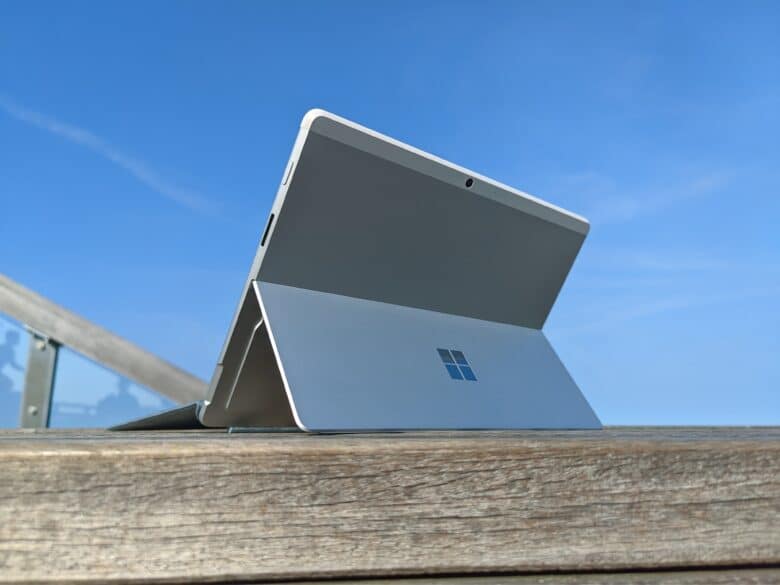
Thus, Microsoft won’t be able to fine-tune Windows to the Surface devices as extremely as macOS is to Apple’s hardware. Otherwise, Windows’ hardware and software compatibility, which is an important unique selling point, would no longer exist.
Also, Microsoft doesn’t have anywhere near the chip design experience that Apple has. The SQ 1/SQ 2 is Microsoft’s first attempt to develop its own ARM processor, the development of which was most likely also largely taken over by Qualcomm. Apple has many years of experience due to their own chips in the iPhones, of which the M1 is incidentally a further development.
In order to catch up with Apple in this field, chip manufacturers like Qualcomm, Intel or AMD would have to develop an ARM processor that is clearly superior to the M1 or Apple’s current chip. Because Apple can squeeze more performance out of the silicon than the other manufacturers can due to its tight integration. In addition, there is a strong further development of “Windows on ARM”, as well as the porting of legacy software to the ARM platform by the respective software developers to reduce further performance losses.
The whole thing would require some kind of coordinated cooperation between the different partners, which seems rather unlikely due to different interests. Furthermore, Apple would certainly be able to offer its products cheaper than the competition if they wanted to, since both Microsoft and the chip manufacturers and OEMs contribute a certain profit margin to the final price, which adds up.
Personally, I’m a big fan of the freedom that Windows or Linux give you compared to macOS, so I hope that the pressure from Apple on the rest of the market will lead to the same progress there. However, unfortunately, I don’t expect anything to change in the current market situation in the near future, unless one of the aforementioned players spontaneously makes revolutionary advances.
Battery
Battery life is the absolute strength of the Surface Pro X. The biggest weakness of many notebooks is not a problem here. I basically got over a day with the Surface Pro X and still had about half the battery left afterwards. In my experience, other laptops are usually empty after this time.
On average, the Surface Pro X achieved a battery life of about 10 hours for me. I’m usually only used to that from my smartphone and find it phenomenal for a notebook.
Price-performance ratio
The Surface Pro X with the SQ 2 processor is available from €1274 at the time of writing. This puts it on the same price level as newer Surface devices. The Surface Pro 8 with similar specs is available from the official Microsoft store starting at €1479.
Even regardless of the lower performance, I think the Surface Pro X is significantly too expensive. Meanwhile, the modern design can also be found on the Surface Pro 8. Furthermore, the x64 emulation has not yet been rolled out in the normal build of “Windows on ARM”, which is why the Surface Pro X still has incompatibilities. Only the low thickness and the exceptional battery life are special features of the Surface Pro X, but in my opinion they do not justify the high price. I would think €999 would be a reasonable price point for the Surface Pro X with SQ 2.
Summary on the Surface Pro X (SQ2)
In general, I think the Surface Pro X is a very interesting device. It could be a game changer for the Windows ecosystem if it gets a competent successor that addresses the aforementioned issues. I’d like to see the battery life of the Surface Pro X on any notebook. But the lack of x64 emulation at the moment and low performance for the set price of over €1000 are why I can’t yet recommend it instead of a Surface Pro, unfortunately.
Surface Pro X (SQ 2)
Workmanship and design
Hardware
Software
Battery
Value for money
83/100
An advanced Surface with a not-so-advanced implementation.



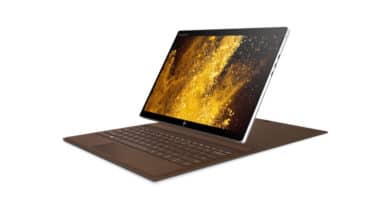
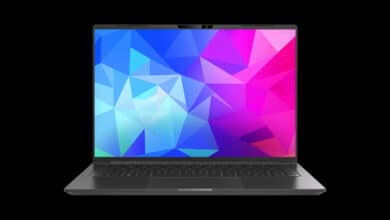

No replies yet
Neue Antworten laden...
Gehört zum Inventar
Beteilige dich an der Diskussion in der Basic Tutorials Community →